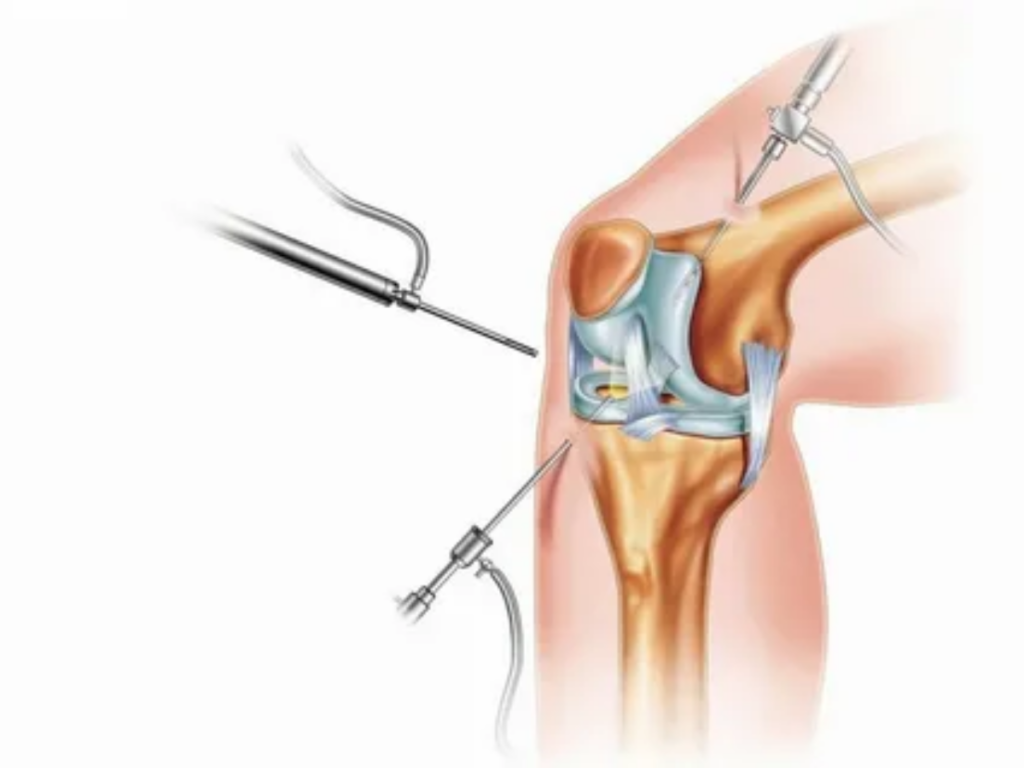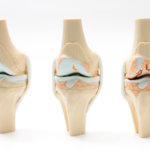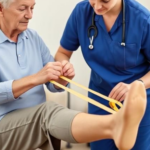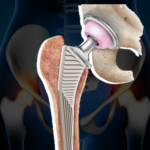
Joint pain can be debilitating, impacting daily life and preventing you from enjoying activities that you once loved. Whether it’s from an injury, arthritis, or wear and tear over time, joint problems are common, especially as we age. Traditional surgical methods to treat joint pain often involve larger incisions, longer recovery times, and more significant risks. However, in recent years, arthroscopic surgery has emerged as a minimally invasive and highly effective alternative for addressing joint issues, offering quicker recovery, reduced pain, and improved outcomes.
If you’ve been struggling with joint pain and are wondering if arthroscopic surgery is the right option for you, read on to understand the benefits, the process, and how it can help improve your quality of life.
What is Arthroscopic Surgery?
Arthroscopy is a modern surgical procedure used to address joint disorders.
It is technically different from open surgery because only small incisions are made, through which an arthroscope-a small camera-and other surgical instruments are passed into the joint. The camera clearly projects images of the joint on a monitor, through which the surgeon diagnoses and handles a range of joint disorders with precision.
This procedure is commonly applied for a joint like the knee, shoulder, elbow, and ankle but can also be performed for the hip and wrist. As arthroscopic surgery is minimally invasive, it generally leads to less pain, faster recovery, and smaller scars than traditional surgery.
Common Conditions Treated with Arthroscopic Surgery
Arthroscopic surgery can solve various joint problems. The most frequent conditions treated with arthroscopy include the following:
1. Torn Cartilage (Meniscus or Labrum Tears):
These are frequently a common kind of injury occurring in weight-bearing joints, like the knee and shoulder. Arthroscopy surgery permits surgeons to repair or remove damaged cartilage and thereby enhance joint function and alleviate pain.
2. Joint Inflammation and Arthritis:
Arthroscopy may be utilized for patients with arthritis or joint inflammation to clean out damaged tissue and smooth rough cartilage surfaces for alleviation of symptoms and return of motion.
3. Ligament and Tendon Repairs:
Ligament injuries, such as torn ACLs in the knee, are often successfully treated arthroscopically, allowing the patient to heal faster with less chance of complications than the more invasive open surgery.
4. Loose Bone Fragments:
To remove loose fragments of bone caused by chipping or fractures that are causing pain or restriction of movement to the joint, arthroscopy is helpful in restoring the smooth functioning of the joint.
5. Synovitis (Inflammation of the Joint Lining):
Arthroscopy can be helpful in removing inflamed tissue to reduce pain and improve mobility.
Benefits of Arthroscopic Surgery
1. Less Invasive:
Open surgery calls for big incisions, but arthroscopy makes use of very small incisions, that range from 1 to 2 cm, with a minimal chance of infections, also lessning the scaring, and damage to surrounding tissues.
2. Shorter Recovery Time:
Since arthroscopic surgery is not an invasive process, recovery time is much shorter. In fact, most of the patients could return to their usual activities in a matter of weeks whereas it takes months to do so through open surgery.
3. Reduced Pain:
Since it is a minimally invasive procedure, usually, post-surgery pain is also lesser that means lesser prescription of pain medications and quicker return to normal lives.
4. Improved Joint Function:
Arthroscopic surgery is intended to address the root cause of joint problems. It involves either removing diseased tissue or repairing a torn ligament and restores full, normal joint function, enabling you to achieve strength, stability, and mobility once again.
5. Less Scar Tissue:
You will have smaller scars with arthroscopy because fewer incisions are made compared to traditional surgery, which is often a worry for most patients.
6. Faster Diagnosis:
Arthroscopy is both a diagnostic and a treatment procedure. The surgeon can visualize the joint directly, and hence even diagnose and treat the problem in the same procedure, making it very convenient for many joint conditions.
Arthroscopic Surgery Necessary?
This surgery is usually recommended as a treatment option when other treatments like medication, injection therapy, and physical therapy fail to provide relief against joint pain and inflammation. In case you have significant pain, swelling, stiffness, or joint instability in the joints and you have not obtained relief after other conservative treatments, then you should think about having surgery arthroscopy.
Some of the conditions that may call for arthroscopy include:
-Persistent pain or swelling in the joint
-Limitations in ability to perform common living activities such as walking, bending, and lifting
What to Expect During Arthroscopic Surgery
Arthroscopic surgery is usually performed under general anesthesia, although in some cases, regional anesthesia would suffice, for example a spinal block. A little incision is created around the relevant joint.The arthroscope makes it easy to view the inside of the joint. Images from the arthroscope are conveyed in real time to a monitor to guide the surgeon during the procedure.
If additional surgical instruments are needed to repair or remove damaged tissue, bone fragments, or cartilage, the surgeon may make other minor incisions.
After the surgery, you will be observed for a few hours before being discharged the same day in most cases. You may be instructed to use crutches or a brace for a while, and you may be advised to take some physical therapy so you can recover your full strength and function of that joint.
Recovery following arthroscopic surgery
Postoperative recovery time is variable following arthroscopic surgery, depending on the type of procedure and the joint involved. In general, however, the recovery process is much more rapid than with open surgery. Many patients are able to return to work or school in several days, and those activities that require more substantial physical exertion can usually be restarted after a few weeks to a few months.
It will also be helping you rebuild strength and mobility in the joint during recovery. To achieve the best outcome, it’s very important to follow the instructions of your surgeon post-surgery.
Is Arthroscopic Surgery Suitable for You?
Arthroscopic surgery serves as an effective therapeutic option for many patients with joint problems, especially when conservative treatments are unsuccessful in giving relief. If you suffer from stiff, unstable, or painful joints, this minimally invasive procedure can restore functionality and enable you to live a healthier, more active lifestyle.
An experience orthopedic surgeon can better diagnose and discuss all the available treatment options. They will assess your condition, discuss treatment options, and recommend the best course of action according to your individual needs and health goals
Summary
Arthroscopic surgery is a relatively minimal intervention approach to more pervasive joint problems, ranging from torn cartilage to arthritis and injuries in the ligaments. Many advantages of this type of surgery are provided, including faster recovery periods, less pain, and smaller scars.
He is one of the finest orthopedic surgeons at PCMC, Pune. Dr. Ankur Kumar specializes in arthroscopic surgery. For well over 10 years, he practices using the latest technology and techniques to provide his patients with the best outcomes.
If you have joint pain and are considering treatment with arthroscopic surgery, please visit hospital in PCMC, Pune, to book your appointment with Dr. Ankur Kumar. Book now for the first step towards a pain-free active lifestyle!




